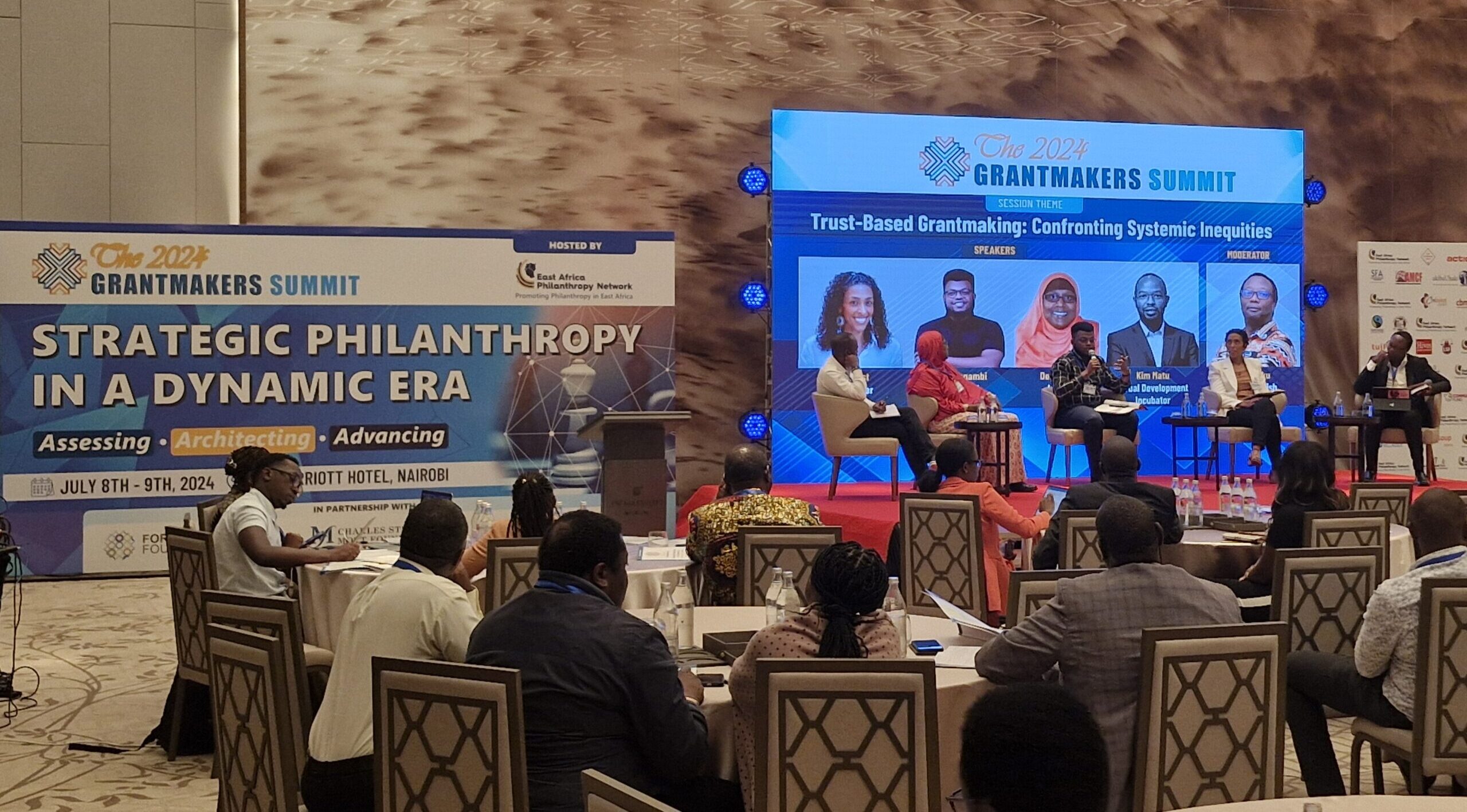
Converge: Convening the right people
Considerations for cultivating a meaningful network participant base
Guest post by Converge.
Networks are fundamentally about bringing an intentional combination of diverse actors together to create a more interconnected whole. This means that who participates in any given network is critically important, and often one of the first big questions an emerging network must answer.
The second C in Converge’s Five Cs of network cultivation is Convene the People. This activity is rooted in ensuring the network is made up of many different voices who represent the diversity of the system they are working within — a core feature of a healthy impact network. The network’s catalysts (and later, its coordinators and leaders) must make explicit efforts to include a variety of points of view on the network’s shared purpose, with an emphasis on respectfully engaging those who have historically been excluded from the conversations directly impacting them.
Knowing that diverse perspectives are essential to more fully understanding a complex system, the question then becomes: who are the right people to represent those voices? Networks typically comprise a variety of organisations, individuals, or a combination of the two. Many network catalysts and leaders wonder whether individuals or entities are more effective as network participants.
Some networks believe that engaging organisational participants will provide greater continuity of knowledge and resources. While this may be true, examining the differences between individual and organisational participants uncovered patterns that can not only help determine who to invite into a network, but also how to engage and understand the people already in the network – regardless of the entity they are representing.
Below we will explore considerations for both individual and organisational participants and how they may influence collaboration and engagement in an impact network.
Convening individuals across the system
Some impact networks identify their participants as individuals with an interest in, passion for, or connection to the network’s purpose, regardless of where they work. A participant base made up of individuals representing themselves has numerous potential benefits.
Positive intermediate outcomes
Trust-building activities in a network context are designed to deepen interpersonal relationships between individuals, and the effects of those relationships lead to intermediate beneficial outcomes for those individuals.
Examples of beneficial outcomes for individual participants include:
- Professional development
- Camaraderie and belonging
- Increased job satisfaction
- Better knowledge of the system as a whole
- Access to people in decision-making roles or other resource holders that may not have been available outside of the network
These individual benefits tend to be felt more immediately than the benefits to organisations, which sometimes take more time to fully realise. Deriving value through participation is essential to sustain engagement over time, so establishing that quickly is helpful in a network’s early stages. This means the case for participation may be easier to make for individuals than for organisations.
Agility and agency
When emergent experiments blossom in a network of individuals, they don’t need to seek organisational approval. They can be nimble. The opportunity for collaboration, experimentation, and new network spin-offs is greater.
Individuals also may have fewer barriers to openness — one of the four essential ingredients of trust. When representing an entity, participants must consider the entity’s mission, brand, collective voice, and intellectual property before engaging. This may make it more difficult for that participant to share their full perspective and deeply connect with others, which is one of the primary ways individuals experience value in a network. When representing oneself, an individual has more agency to choose their desired level of openness.
Underrepresented voices
It is not uncommon for those who are uniquely impacted by the issue a network is addressing to have historically been excluded from conversations about that issue. This relates to resource availability and, often, longstanding systemic inequities. It may be that there are no entities who perfectly represent the points of view of some system stakeholders. Creating an opportunity for individuals to participate may open the door for more diverse perspectives in the network — an important goal of a network approach.
Connecting organisations with aligned missions
Many networks identify their participants as organisations. Organisational participants might be nonprofits, corporations, municipalities, universities, or professional associations, for example. Representatives from these organisations participate based on their entity’s interest in the network’s purpose.
Continuity through organisational buy-in
One of the strongest cases for organisations as network participants is continuity. When determining who must be involved in the network to effectively advance its purpose, network catalysts may identify specific entities who represent important system perspectives or whose missions are inextricably linked to the purpose of the network. Engaging organisations helps ensure representation from critical stakeholders over time.
If a network is being catalysed to focus on homelessness, for example, it’s likely that local shelters and governmental offices working on homelessness prevention would be involved. If these entities are engaged as participants, those perspectives will always be included even if the individuals representing the entities change. To ensure continuity, the organisation can create a succession plan so a new representative is always ready to step in. Because individuals are more likely to change jobs than organisations are likely to change missions, there tends to be less participant turnover when the participant is an organisation.
Access to resources
Another benefit of organisational participation in a network is access to resources, both people and money.
Networks need to generate funding for their operations, and sometimes, for emergent projects. At minimum, a network’s essential collaborative infrastructure — the salary of the coordinator and the costs associated with convenings — requires resources. If organisations see value in the network, they may be willing to contribute financial or in-kind resources to help sustain it.
This type of contribution is distinct from membership fees, which some networks successfully enact, but which can also create equity issues. A membership fee model whereby all participants pay to be in the network can make it more difficult for individuals and less resourced organisations to participate. Rather than required fees, voluntary contributions from participating organisations are helpful for longer-term network sustainability while maintaining equitable access to participation.
Consistent representation from participating organisations can also help to foster long-term organisational partnerships as relationships deepen and more individuals from the organisations are connected to one another. If an organisation sees value in the network, they can include participation as a part of someone’s job. Participants who are being paid for their time in the network tend to be more active than those who must treat participation as extracurricular and engage on a volunteer basis. That active and consistent participation creates more opportunities for collaboration to emerge.
Convening groups across participating organisations can not only help drive system change through partnerships, but also may help to generate more resources. For example, the development teams from several organisations may choose to co-author proposals not only for collaborative program work, but also for network projects or operations.
Though trust in a network context is typically built between individuals, those relationships can grow into entity-level partnerships that extend beyond the work of the network itself. This type of emergent collaboration among organisations helps pave the way toward longer-term system change.
Final considerations
Whether participants are representing themselves or an organisation is an important and sometimes less considered factor in how they interact and contribute to the network.
Individual network participants tend to have more agency, ability to represent a nuanced or less common point of view, and the opportunity to more quickly experience the benefits of participation.
Organisational network participants tend to provide more continuity in representation over time, ability to ensure critical stakeholders’ points of view are included, and better access to resources to sustain participation.
When it’s time to convene the right people, whether they are individuals, organisations, or a combination of the two, the most effective networks convene people from all parts of the system who are passionate about the purpose, have experience or ideas to share, and are willing to embrace collaboration and emergence on the path toward system change.
There are patterns, tools, mindsets, and considerations that help solidify the foundation for collaboration — but, there is no blueprint. We find the right people by embracing many points of view and building connections that help us make sense of the system. As network pioneer and co-catalyst of the Converge Network, David Sawyer, famously said: “If you’ve seen one network, you’ve seen one network.”

